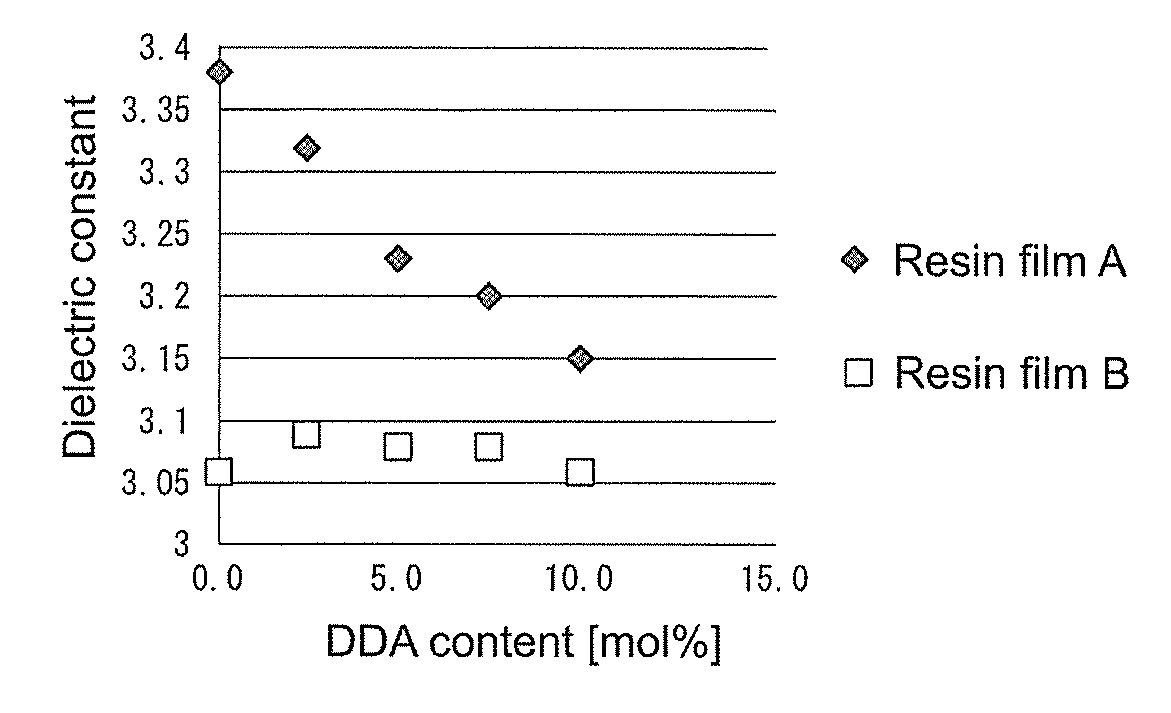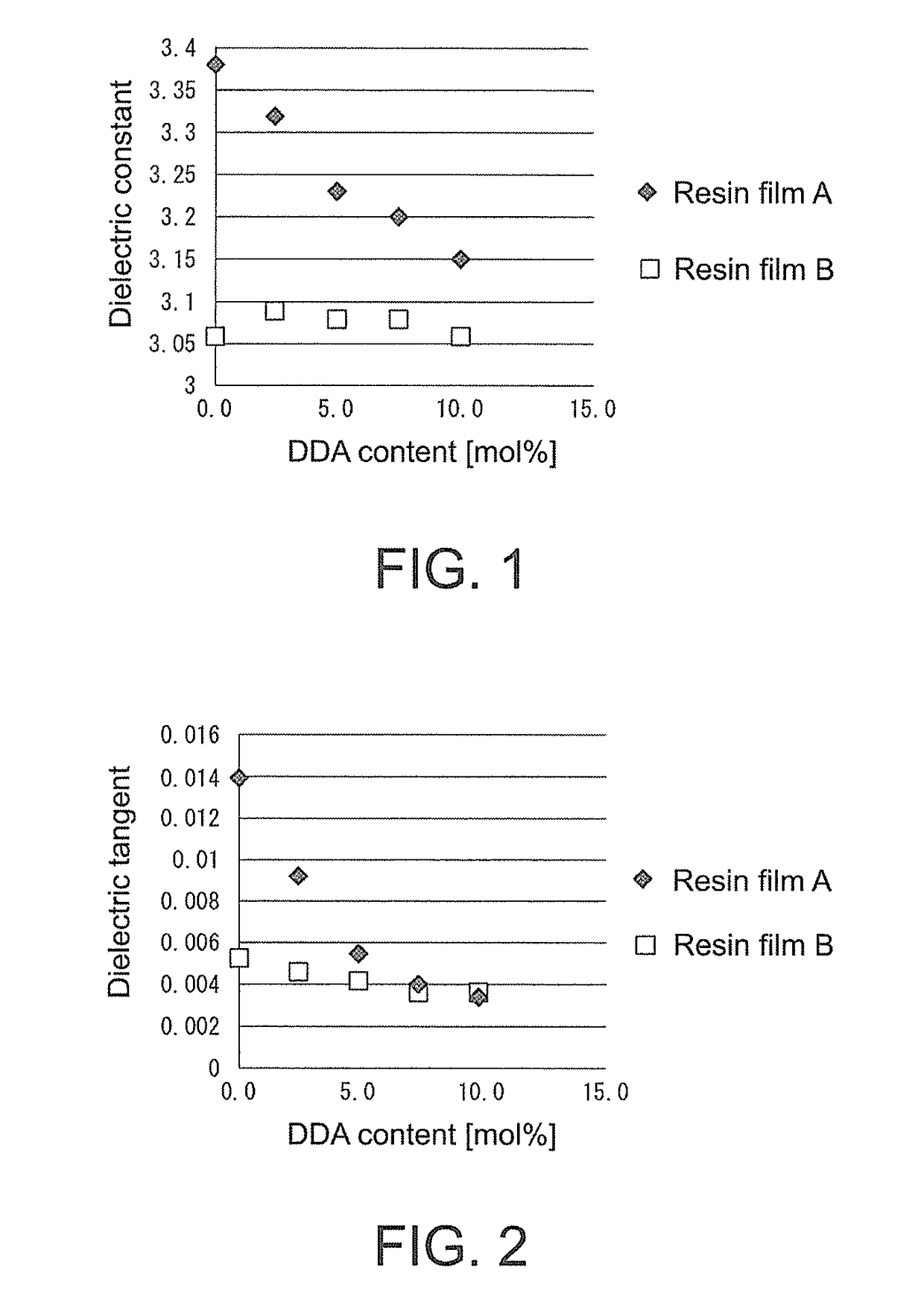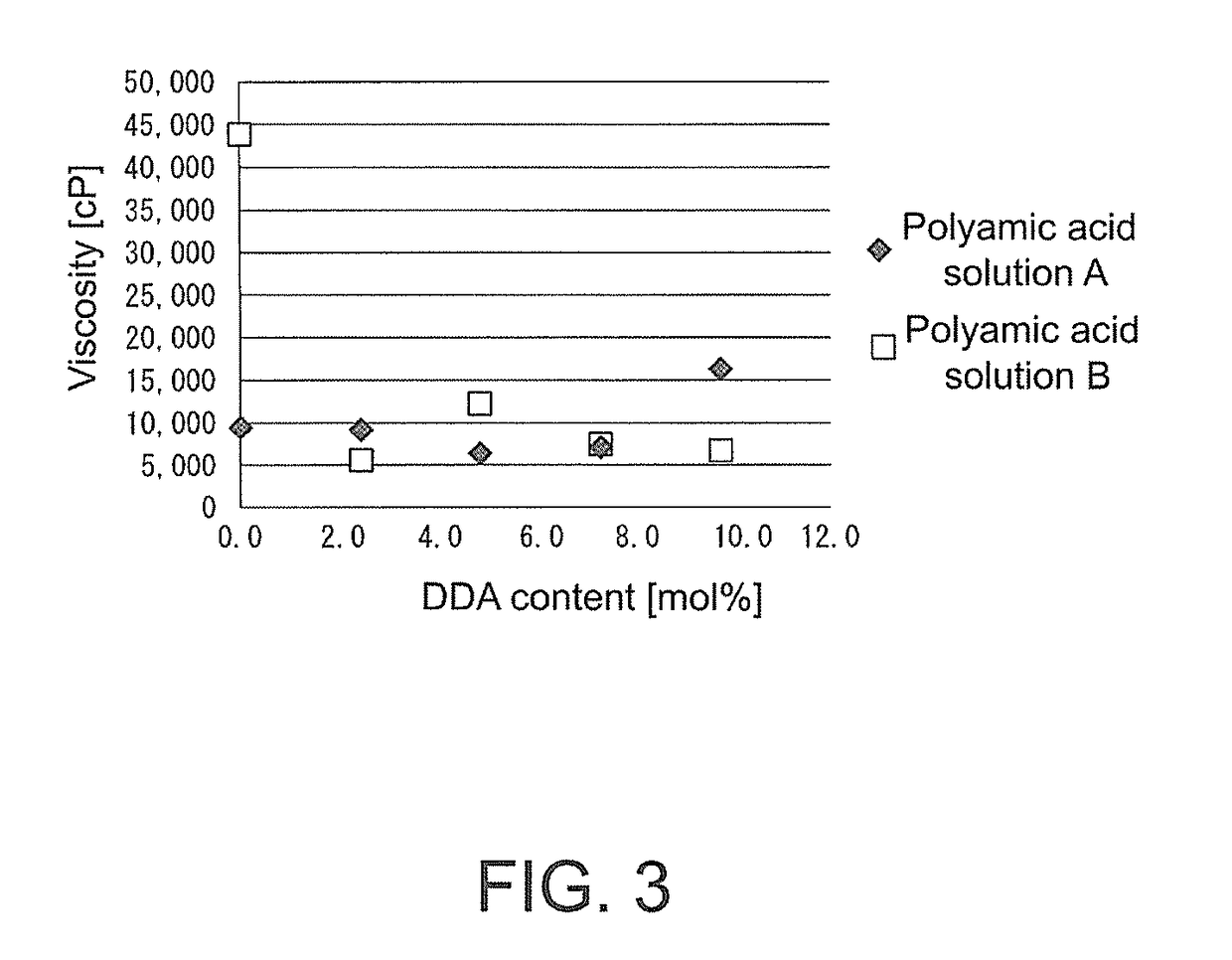Polyimide, resin film, and metal-clad laminate
a technology of polyimide and resin film, which is applied in the direction of synthetic resin layered products, dielectric characteristics, other domestic articles, etc., can solve the problems of loss of electrical signals or signal waveform deformation, inability to be subjected to processing such as soldering, and lack of dielectric characteristics, etc., to achieve low dielectric tangent and good visibility
- Summary
- Abstract
- Description
- Claims
- Application Information
AI Technical Summary
Benefits of technology
Problems solved by technology
Method used
Image
Examples
first embodiment
[0028]First of all, a polyimide preferably usable in the first embodiment (hereinafter sometimes referred to as “the polyimide of the first embodiment”) is described.
[0029][Polyimide of First Embodiment]
[0030]The polyimide of the first embodiment preferably has structural units represented by general formulae (1) and (2) below.
[0031]In the formulae, Ar represents a tetravalent aromatic group derived from an aromatic tetracarboxylic anhydride, R1 represents a divalent dimer acid-type diamine residue derived from a dimer acid-type diamine, and R2 represents a divalent aromatic diamine residue derived from an aromatic diamine, m and n represent the molar proportion of each constitutional unit, m ranges from 0.01 to 0.15, and n ranges from 0.85 to 0.99.
[0032]The group Ar can be exemplified by a group represented by formula (3) or (4) below.
[0033]In the formula, W represents a single bond, a divalent hydrocarbon group having 1 to 15 carbons, or a divalent group selected from —O—, —S—, —C...
second embodiment
[0103]Recently, in safety aspects, requirements for flame retardancy of materials get higher. Moreover, in environmental aspects represented by the Restriction of Hazardous Substances (RoHS) Directive and the Waste Electrical and Electronic Equipment (WEEE) Directive, it is required to not contain a conventionally used halogen-containing flame retardant and be halogen free. When a flame retardant is blended in the insulating resin layer of the circuit board typified by an FPC, there is a worry that physical properties of the insulating resin layer may vary depending on the flame retardant components. For example, when the thermal expansion coefficient of the insulating resin layer is considerably changed by blending of the flame retardant, dimensional stability of the insulating resin layer is reduced. As a result, a problem that the reliability of electronic devices using the circuit board is reduced may occur.
[0104]The second embodiment of the invention relates to a polyimide, a r...
examples
[0174]The features of the invention are more specifically explained with reference to the examples shown below. However, the scope of the invention is not limited to these examples. Moreover, in the following examples, unless specified otherwise, various measurements and evaluations are carried out in the following manners.
[0175][Measurement of Thermal Expansion Coefficient (CTE)]
[0176]The thermal expansion coefficient was measured in the following manner. By means of a thermo-mechanical analyzer (made by Bruker Corporation; trade name: 4000 SA), a polyimide film having a size of 3 mm×20 mm was heated from 30° C. to 250° C. at a constant temperature rising rate with application of a load of 5.0 g, further held at that temperature for 10 minutes, and then cooled at a rate of 5° C. / min. An average thermal expansion coefficient (linear thermal expansion coefficient) from 240° C. to 100° C. was calculated.
[0177][Measurement of Glass Transition Temperature (Tg)]
[0178]The glass transition...
PUM
| Property | Measurement | Unit |
|---|---|---|
| mol % | aaaaa | aaaaa |
| Ra | aaaaa | aaaaa |
| surface roughness Rz | aaaaa | aaaaa |
Abstract
Description
Claims
Application Information
 Login to View More
Login to View More - R&D
- Intellectual Property
- Life Sciences
- Materials
- Tech Scout
- Unparalleled Data Quality
- Higher Quality Content
- 60% Fewer Hallucinations
Browse by: Latest US Patents, China's latest patents, Technical Efficacy Thesaurus, Application Domain, Technology Topic, Popular Technical Reports.
© 2025 PatSnap. All rights reserved.Legal|Privacy policy|Modern Slavery Act Transparency Statement|Sitemap|About US| Contact US: help@patsnap.com



